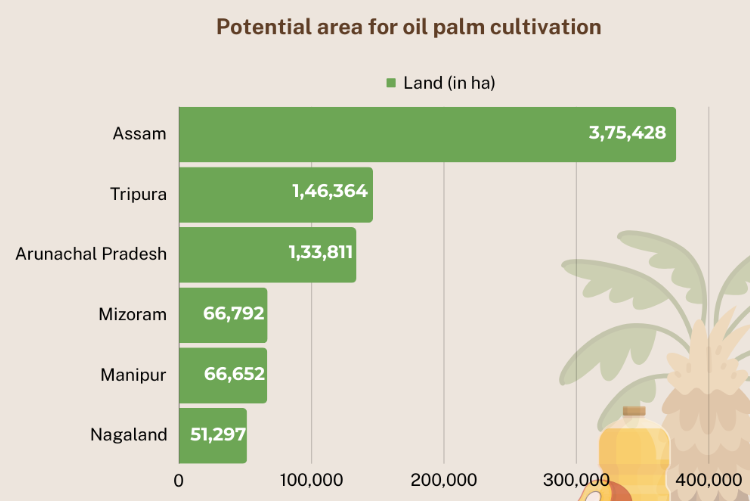7667766266
enquiry@shankarias.in
The push for large-scale monoculture plantations of oil palm is taking a toll on the environment and on people's economic and social security
Tocotrienols is an excellent source of fatty acids, free of transfats, and contains lower levels of omega-6. Its antioxidant properties also aid in conditions such as Alzheimer’s and Dementia.
|
Status of Oil Palm in India |
|

Sikkim and Meghalaya have decided to stay away from planting oil palm.
Down To Earth | Challenges & Impacts of Palm oil in Northeast India